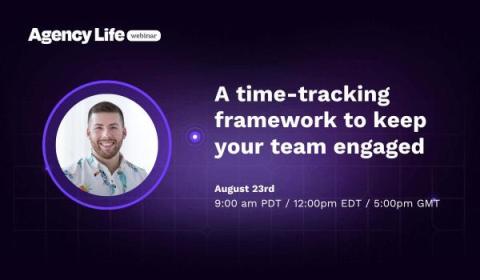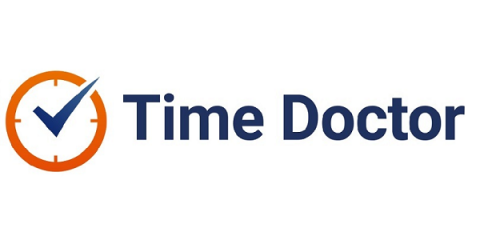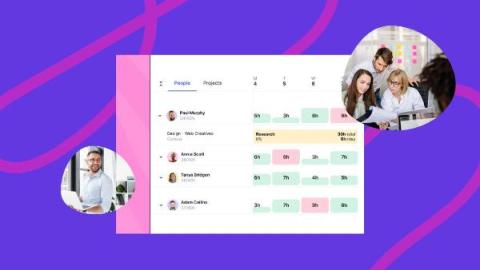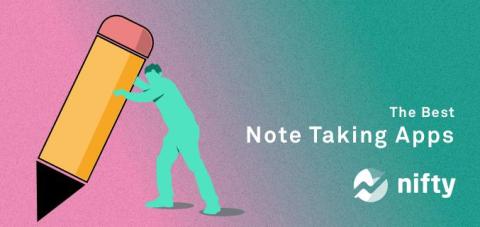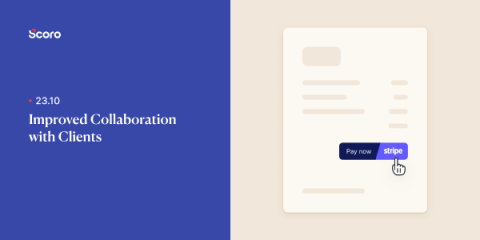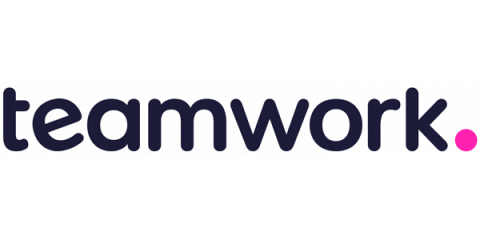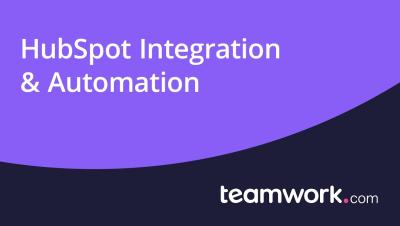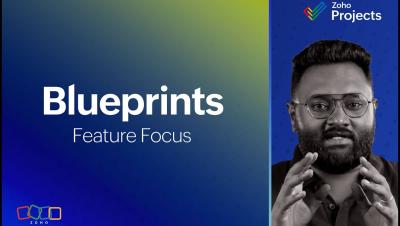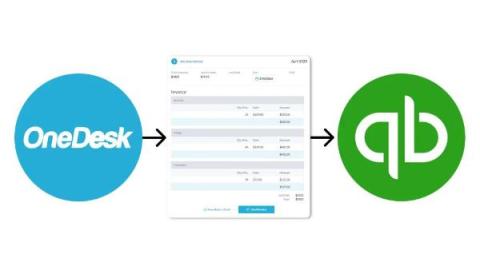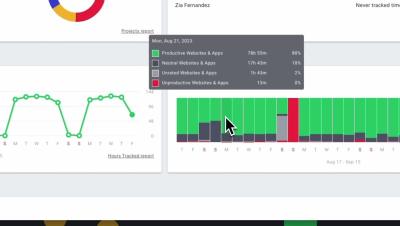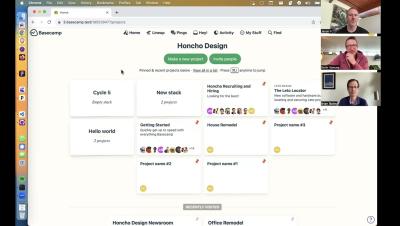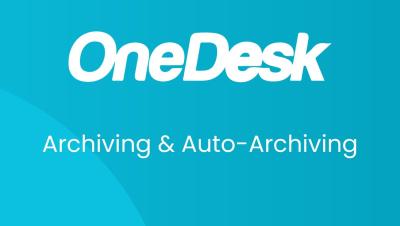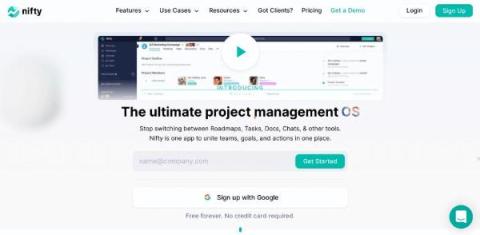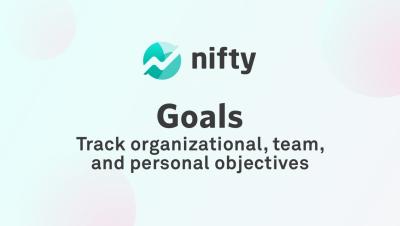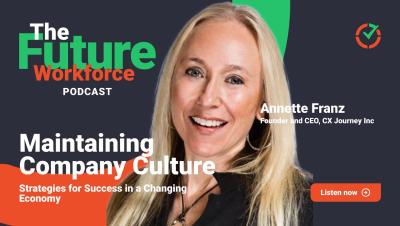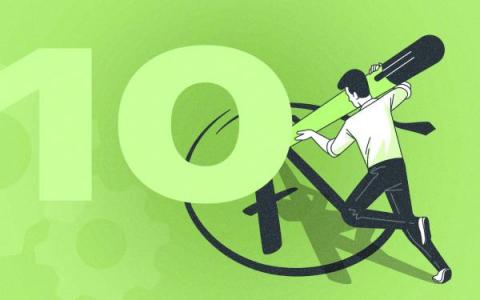Teams | Collaboration | Customer Service | Project Management
September 2023
The wrap-up: 5 key takeaways from the 'Time-tracking framework to keep your team engaged' webinar
We recently had the pleasure of sitting down with Marcel Petitpas, Co-Founder and CEO of Parakeeto, to unpick his surefire time-tracking framework for agencies. If you’re an agency leader who has ripped up your time-tracking methodology and thrown it out the proverbial window (let’s face it, who hasn’t?) then this blog is for you. Time-tracking is notoriously difficult to get right, but with Marcel’s guidance and the right tools in place, it really doesn’t have to be.
Employee utilization rate: How to calculate and improve it
Do your employees always seem to be working hard, yet their total billable hours remain low? Tracking your employee utilization rate is essential for service providers that need to optimize resources and improve profitability. Not monitoring this metric means you could be doing a lot of work without many client deliverables or billable hours to show for it. How do you calculate this rate and keep it as high as possible?
What is compensatory (comp) time?
A perceived lack of fair or competitive compensation is a major reason for employee turnover, and ‘compensation’ includes more than a person’s take-home pay packet. It pays to understand the varied ways you can compensate employees—including comp time—and how to do so while staying within the law.
Understanding the MOCHA method in project management
If you’ve tried RACI models for clarifying responsibilities in your marketing project management efforts, did you get the results you were hoping for? For some agencies, RACI delivers incredible clarity. But others find it a little underwhelming, vague, or even confusing. Divvying up project roles into four categories (responsible, accountable, consulted, and informed) is one way to bring clarity to a project.
Disciplined Agile 101: Your comprehensive guide to DA
Does it ever feel like following an agile approach isn’t as, well, agile as it’s supposed to be? For all the advantages agile delivers, there are trade-offs. And sometimes, the framework ends up getting in the way of business agility. Some are turning to a hybrid approach in an effort to achieve better adaptability — and greater agility — throughout the delivery lifecycle. This hybrid approach is a scaled agile framework called Disciplined Agile.
The principles of lean project management
Did you know that businesses waste $1 million every 20 seconds because of poor project performance? It’s a staggering number for sure, and for growth-focused agencies especially, it’s a statistic to avoid becoming a part of. That’s where lean thinking comes into play: to help agencies avoid waste and inefficiencies and keep projects more streamlined and profitable.
6 of the best lean project management software
With a laser-like focus on eliminating waste through continuous improvement, it’s easy to see why lean project management has caught on even outside its manufacturing origins. Today, lean has become one of the leading styles of project management across software development, marketing, manufacturing, and more. Companies ranging from Intel to John Deere to Nike have implemented lean manufacturing and seen powerful results.
Boosting email conversion rates: Best practices and key metrics
The stats about email marketing ROI seem almost too good to be true: $36 for every $1 spent is a heck of a return. But results like those don’t happen simply by deciding to send a few sporadic marketing emails. They happen when you send the right emails to the right people at the right time, pushing them to the right outcomes.
How to Implement Sustainable Project Management in Your Workplace
What's next for managers in the stress-free future of work
We’ve all become familiar with the phrase “unprecedented times”. You might even say it’s been overused. But if there’s one cohort in the corporate world that knows what the phrase really means, it’s managers. Remote work is booming. Demand for decentralized offices is sky-high. Good people are leaving unexpectedly. Up to 60% of employees are on the fence about their jobs or on their way to checking out.
Rethinking monitoring: A fresh approach for modern teams
For the last 40-50 years, forward-thinking organizational leaders have been working hard to reform top-down organizations into places where democracy and collaboration set the pace of progress. Employee empowerment has become non-negotiable. However, one area that has been slow to transform is employee monitoring. It’s only since Time Doctor recognized the need for employee-friendly monitoring that things really started moving in the right direction.
10 Best Note Taking Apps in 2023 (Free & Paid)
Whether you’re attending a lecture for coursework or a meeting to understand client requirements, one thing is common – you’re left to your means to process and retain large volumes of information. And unless you’re someone who can boast eidetic memory, using the best note taking apps can be a life-saving skill in classrooms and boardrooms alike. With a flood of note taking apps invading the markets, choosing one that serves your purpose can be challenging.
October 2023 Version Update: Improved Collaboration with Clients
AI for workforce management: Everything you need to know
The potential of AI has recently received a lot of attention in the field of workforce management. A new article or blog post on how AI is changing the way we work appears every day, making grand claims about increased productivity, accuracy, and a smarter workplace. But it can be challenging to distinguish fact from fantasy in the midst of all this excitement. So, what’s the real story behind AI in workforce management? How much of the hype is reflected in real-world applications?
Strategies for successful project management in nonprofits
Running a successful startup is like playing chess — it requires foresight, strategy, and careful planning. Before you make a move, you must consider all the possible outcomes and how your decisions will play out in the long term. The same holds true for startups. Unfortunately, many entrepreneurs overlook the importance of project management in setting up for success.
Setting the stage for success: How to welcome a new employee
For many, the first day on the job feels a lot like the first day at a new school: You don’t know anyone, have no idea where anything is, or who to turn to for help. There’s a definite warm relief when a friendly face takes you under their wing to show you around and make introductions. And whether you’re the new kid at school or the new person at the office, that sense of relief applies.
An essential guide to client orientation
Pop quiz: How much of your agency’s revenue comes from clients? If you didn’t answer “all of it,” the percentage is still pretty high, right? (And if it’s not — well, we want to know your secret!) Without clients, an agency can’t continue to pay its people or keep the lights on. This reality isn’t lost on managers and CEOs, and if asked, just about every one of them will say their agency is customer-centric.
10 excellent project management tools every startup should consider
In a startup, you deal with limited resources, tight deadlines, and high expectations. Not to mention, you’re often wearing multiple hats, from visionary leader to meticulous planner. So, how do you keep your ship steady and sailing towards your goals? By finding the right project management tools. These digital lifesavers are designed to make your life easier, helping you with project planning, task management, time tracking, and workflow automation.
The role of project management in startup success
Running a successful startup is like playing chess — it requires foresight, strategy, and careful planning. Before you make a move, you must consider all the possible outcomes and how your decisions will play out in the long term. The same holds true for startups. Unfortunately, many entrepreneurs overlook the importance of project management in setting up for success.
How to Implement Process Improvement Management in Your Organization
Increasing Employee Productivity: 10 Simple Strategies
Top Online Conferences for Digital Agencies
How to Find and Hire the Right Talent with a Recruitment Strategy
The Best Tips to Get Hired in 2023
The Power of Time Management Goals: How to Set Them and Achieve Success
How "Schedule Anywhere or Schedule Everywhere" Can Help Your Working Environment
How to Become More Confident at Work
Creating a Free-Harassment Workplace
Simple ways to track employee performance (+ best tools)
Is your team meeting deadlines, achieving business goals, and delivering the results you expect? With an employee performance tracking system, you can easily measure these outcomes and spot trends in your team’s activity. However, not all tracking systems are created equal. Some require much more manual oversight than others. Others employ check-ins too infrequently to support efficient change or allow for substantial improvements. So, which solution is right for your team?
Why and how to measure employee satisfaction
We all know the famous saying: “What gets measured gets managed.” But resources are finite, so you can only monitor KPIs (Key Performance Indicator) for some things in your business. You need to choose what gets measured and what gets managed wisely. This article will argue that employee satisfaction is one of the most critical metrics. And that any business looking to grow and satisfy its customers should be measuring it as a priority.
Teamwork.com HubSpot Integration and Automation
Sign up for a free 30 day trial: https://www.teamwork.com/project-management-software/
If you’re still learning how to use Teamwork.com, sign up for one of our daily webinars: https://www.teamwork.com/webinars/
Zoho Projects | Feature Focus - Blueprints
How to Hire a Web Developer: What Skills to Look For And Where to Find Them
9 Project Management Software That Integrate with Xero
Professional services software integrated with QuickBooks
Professional Services Automation (PSA) software enables your business to easily and accurately log time, plan client projects, and provide continuous client support. With a QuickBooks integration, you can sync data from the PSA tool easily. For example, you can generate invoices from time logged within your PSA tool, then send over those invoices right to your QuickBooks account. This way, information is easily synced between systems and your business can be paid accurately and on-time.
Maximizing Productivity with Time Doctor's Productivity Ratings
Motivation or Penalty? How to Ensure Your Team Performs Well.
Hybrid work strategies: New rules for the future of work
In recent years, the concept of remote work has gained traction, but the COVID-19 pandemic made it a necessity for companies worldwide. With this drastic shift, questions about the future of work have come to the forefront. To gain insights into this evolving landscape, Liam Martin had a conversation with Dave Mastronardi, the CEO and founder of Gamestorming Group.
37signals: Live design review for "Basecamp project stacks"
Boost Your Business with Employee Productivity Tracker
Ready to stop second-guessing your performance metrics? Here's what you can do
Most people realize this too late: personalizing your Time Doctor Productivity Ratings is the secret to evaluating your team’s performance accurately and fairly. Ratings put a value on the underlying software, channels, and information sources your team interacts with when delivering outputs and outcomes. In addition to wisely spending time on tasks that matter—how work is produced is important for your company’s cost-effectiveness.
What's New in Asana | September 2023
Zoho Projects: Bring your team together and accomplish more
#projectmanagement #zohoprojects Zoho Projects enables visualization of your project schedule and workload with Gantt chart. With collaborative features such as social feed, audio/ video conferencing, and discussion forums, you can connect with project stakeholders in a way that's quick and easy. Project and portfolio reports and dashboard keep you in the know of project updates.
7 High-Income Skills to Learn
9 best idle time tracking software for remote/hybrid teams
Are your remote or hybrid teams actually working during their shifts? Or are they clocking more idle time and less active time? You don’t know the answer unless you review their completed tasks or check in with them throughout the day. At Time Doctor, we understand how challenging it can be to get these answers without crossing the line into micromanagement. Over the past decade, we’ve successfully grown our own remote team to 100+ people in over 31 countries. Our solution?
Common Mistakes Agencies Make When Choosing Pricing Strategies @getparakeeto
What is an Agency Pricing Quadrant? @getparakeeto
Unusual Activity Report: Boost Remote Work Accountability with AI | Time Doctor Feature
OneDesk - Archiving & Auto-Archiving
11 Best Software Development Tools To Use in 2023
On average, it takes businesses as much as nine months to build a custom software product. Engage the right developer (or team of developers) for the task and equip them with the right software development tools, and you can cut this time in half! This blend of people, processes, and technology lays the perfect foundation for breathing life into your unique idea. Once you use this recipe to beat time and realize your vision, you can easily leverage the software product as a competitive advantage!
How to Keep Business Costs Low
The rise of responsible outsourcing: Boldr Impact's mission-driven approach to BPO
Remote work has become an essential part of the modern workforce, and behind the scenes, there are unsung heroes making it all possible—business process outsourcing (BPO) companies. In a recent podcast interview, Liam Martin, the co-founder of Time Doctor and Running Remote, sat down with David Sudolsky, the founder of Boldr Impact, a mission-driven BPO company, to explore the unique perspective and impact of BPO companies in the remote work landscape. Listen to the full interview here.
Creating Goals in Nifty
Skills-Based Hiring: The New Age of Recruiting
10 Best Flowchart Software Tools to Use in 2023
Flowchart software makes things easier for everyone on the team. With it, you can: The catch? There are diverse types of flowchart software available today. Selecting the right one can make all the difference to your success. In this article, we will look at the 10 best free flowchart software you can try in 2023 (and beyond).
Tracking Average Cost per Hire
How to Asana: Organize projects with custom fields
Using Project Templates
Many businesses deliver services or projects for their clients which often follow a similar flow. Projects of this nature can encompass a wide variety of procedures or services such as web design projects, marketing campaigns, or onboarding procedures. Let’s take the example of a design project. The standard procedure is similar each time with tasks that include things like wireframes, mocks, prototypes. No matter the web design project, it probably includes these tasks.



